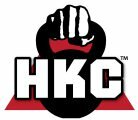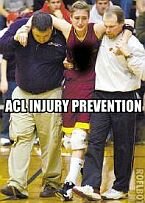Golfer's Shoulder
 GOLF FITNESS MADE EASY A Complete Guide To Golf Fitness and Injury Prevention |
 ROTATOR CUFF RELIEF: The Ultimate Guide to Rotator Cuff Fitness and Injury Prevention |
The shoulder is a common injury area for golfer's. An interesting fact is that both shoulder's participate equally in the swing. The same study showed that the deltoids (the large shoulder muscle) are virtually inactive during the swing, while the rotator cuff muscles work throughout the swing.
The shoulder is a ball and socket joint. The arm bone (humerus) ends in a ball shaped surface (humeral head) that fits into a very shallow socket (glenoid). This socket is part of the wingbone (scapula). This shallow socket allows the shoulder joint tremendous range of motion.
The rotator cuff is a group of four muscles which rotate the humerus and hold the shoulder in place by keeping the humeral head in the proper position inside the glenoid socket.
These muscles allow everyday repetitive motions like scratching behind your head or back, painting, waxing, using hand tools, reaching, and lifting overhead. They are used extensively in athletic activities like throwing a ball, serving a tennis ball and driving a golf ball.
Thus, chronic wear and tear or a fall or collision can cause injury to the rotator cuff. It is not uncommon for a patient to have intermittent shoulder pain for several years which is not completely relieved by rest and anti-inflammatory medication. Symptoms may include pain in the front, side, back or deep inside the shoulder especially with overhead movements. Putting on a bra, shirt or coat may be painful. To properly diagnosis a rotator cuff injury a complete examination of the shoulder and neck must be done.
Injury to the rotator cuff comes in the form of muscle strain and tendonitis. There are three grades of strains. Grade I is a mild tear in the muscle which allows complete or almost complete range of motion with little or no pain. Grade II is a moderate tear of the muscle which decreases range of motion with moderate to severe pain. Grade III is a severe or complete tear of the muscle which severely limits range of motion. Tendonitis is an inflammation and fraying of the tendon (area where the muscle attaches to the bone).
When these muscle and tendon tears heal the new tissue is called scar tissue. There are four problems with scar tissue: 1) It is weaker than the original muscle tissue, 2) It is less elastic (flexible) than the original muscle tissue, 3) It forms in all different directions, not just along the lines of the original muscle, and 4) Many small nerve endings grow into the area. These changes make the injured area very painful when it is moved too far or too strenuously.
Treatment of rotator cuff injuries includes proper exercise to strengthen and gently stretch the rotator cuff muscles and deep massage to break up the scar tissue. Ultrasound and electrical muscle stimulation can help speed healing as well. When returning to exercise remember R.E.S.T.: Resume Exercise below the Soreness Threshold. Rehabilitative exercise should not cause pain while performing the exercise and little to no pain afterwards. There are many exercises which can be done.
Come in and we will perform a proper examination and treatment and show you how to do the exercises properly.
See Active Release Techniques® and Graston Technique for more information on injury care and prevention.
|
The Ultimate Nutritional Lie Detector Test LEARN MORE 
|
Kettlebell Rehab

Click Here
To See How Kettlebells will transform your body!
Vortex Rehab

Click Here
To See How This
Revolutionary Machine
Can Help You!
Partner / Support

Loans up to 3 months - fast cash advances for up to 90 days and up to $5,000!


















